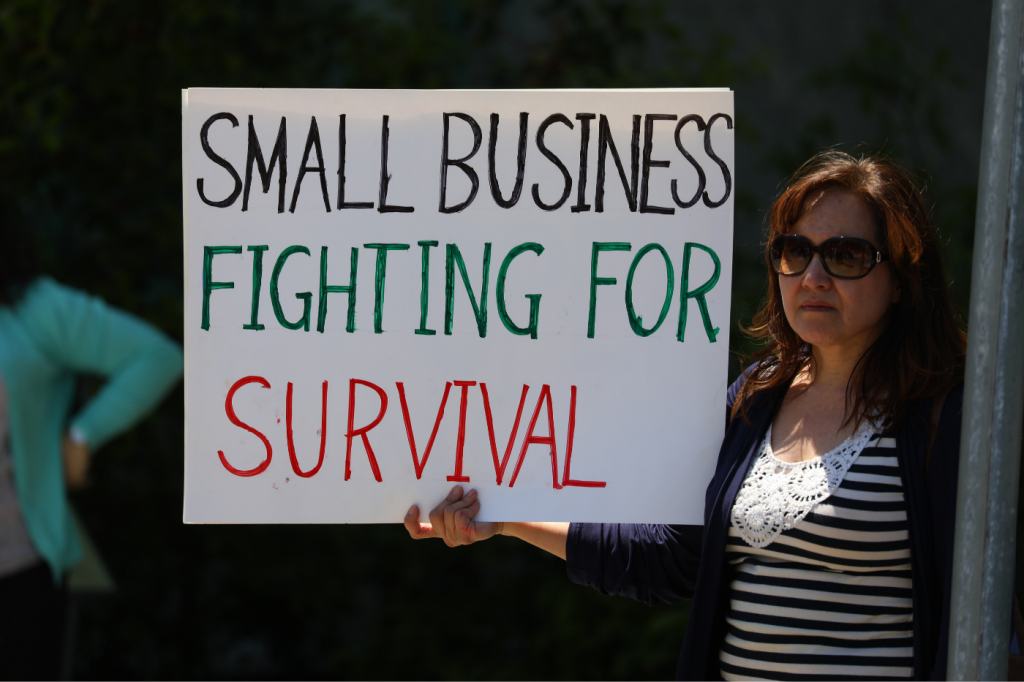Overview:
The COVID-19 pandemic has brought on huge economic challenges for small businesses. To prevent a massive wave of layoffs and small business closures, the U.S. Congress passed the Coronavirus Aid, Relief, and Economic Security (CARES) Act, which included over $600 billion for the Paycheck Protection Program (PPP).
In this brief, we study whether the distribution of PPP loans in California followed a clear racial or spatial pattern by comparing the distribution of loans across neighborhoods with different racial or ethnic compositions. We provide findings on three analyses: first, we study the pre-pandemic small business and employment climate across neighborhoods with different racial/ethnic compositions to understand any pre-existing inequities in the economic base of neighborhoods of color relative to those of majority-white neighborhoods. Second, we quantify whether PPP loans have been dispersed equally across neighborhoods with high densities of Latino, Black, and Asian residents relative to high-density white neighborhoods. Third, we present a series of maps that shed light on the spatial relationship between the concentrations of white residents and the amount of PPP dollars received in that neighborhood.
Main Findings:
• Before the pandemic, Latino and Black neighborhoods were already economically disadvantaged. Ethnic neighborhoods had considerably lower concentrations of small businesses and small business-employment than white neighborhoods. Latino and Black neighborhoods had 52 or 55 businesses for every 100 businesses found in a white neighborhood. For every 100 people employed in a small business in a white neighborhood, there were 68 employees in Black and Latino neighborhoods. Asian neighborhoods had a smaller concentration of small businesses but a higher concentration of jobs in small businesses than white neighborhoods.
• The distribution of loans through the Paycheck Protection Program (PPP) widened pre-pandemic racial inequalities. Relative to the population of the neighborhoods, the PPP supported far fewer jobs per resident in Black and Latino neighborhoods (5.8 and 4.9 jobs per 100 residents respectively) than in white neighborhoods (8.1 jobs per 100 residents). In comparison to pre-pandemic expenditures on payroll, PPP loans covered 26% of the pre-pandemic payroll amount in Asian neighborhoods, 37% in Black neighborhoods, and 43% in Latino neighborhoods compared to 49% of the pre-pandemic payroll in white neighborhoods. Latino and Black neighborhoods received less PPP dollars per resident than white and Asian neighborhoods. Latino and Black neighborhoods received $367 and $445 per resident respectively, compared to $666 and $670 received by businesses in white and Asian neighborhoods.
• Our spatial analysis shows a clear pattern: whiter neighborhoods, which tended to be wealthier, received a larger share of PPP funds throughout the state.
This research was made possible by a grant from the Wells Fargo Foundation.

